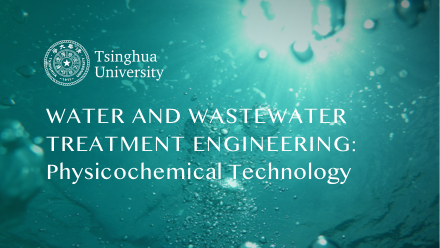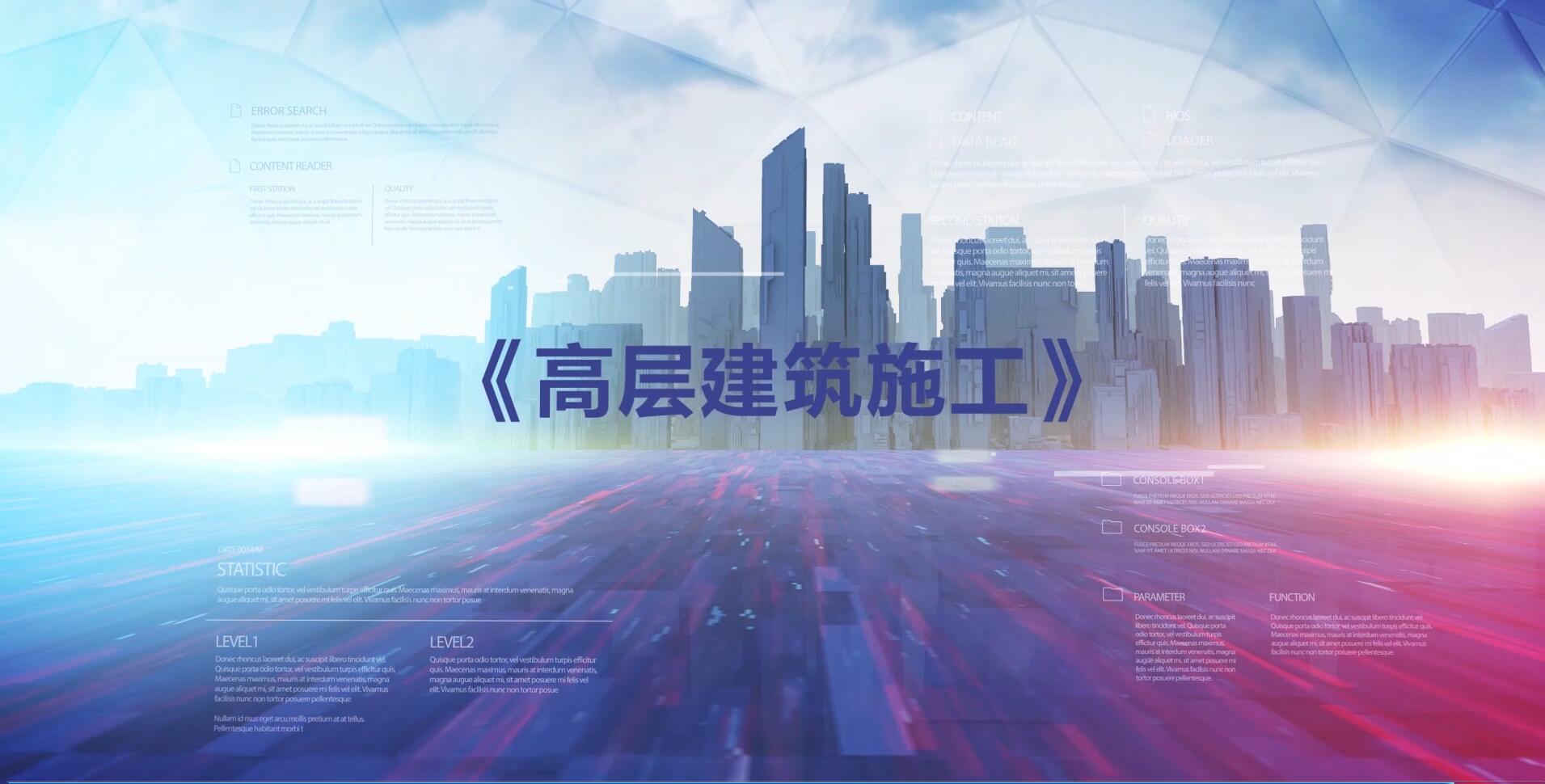
当前课程知识点:Water and Wastewater Treatment Engineering: Physicochemical Technology > Chapter 0 Introduction > 0-3 Wastewater treatment process > 0-3 Wastewater treatment process
返回《Water and Wastewater Treatment Engineering: Physicochemical Technology》慕课在线视频课程列表
返回《Water and Wastewater Treatment Engineering: Physicochemical Technology》慕课在线视频列表
同学们好!在这一讲,为大家介绍废水处理工艺
在介绍废水处理工艺之前,我们先来看看什么是废水?
废水是我们在日常生活和工农业生产中被污染,排放出来的水
根据其来源
可分为城镇污水、工业废水、畜禽养殖废水以及初期雨水等
这些废水如果要排放到天然水体
就需要满足一定的排放标准
如果要再生回用的话,也需要满足回用水标准
因此,就需要对废水进行适当的处理
这里给同学们介绍一下废水的排放和回用标准
首先是城镇污水处理厂污染物排放标准,于2002年颁布
关于城市污水再生利用的系列标准
包括再生利用的分类、城市杂用水、景观环境用水
地下水回灌、工业用水以及农业灌溉用水水质标准
大家来看,这是我们取到的城镇污水的一个照片
看上去它十分浑浊,略带一点黑色
那么像这样的城镇污水,通常它的污染水平在什么范围呢?
城镇污水的COD浓度一般在300-500mg/L,BOD在180-250mg/L
SS在200-250mg/L,总氮在30-60mg/L,总磷在5-8mg/L
经过处理以后
如果要达到城镇污水处理厂污染物排放标准的一级A标准的话
COD需要小于50mg/L,BOD小于10mg/L
SS小于10mg/L,总氮小于15mg/L
氨氮小于5mg/L,总磷小于0.5mg/L
可以看到,处理水变得十分清澈
接下来为大家介绍废水处理程度的分级
根据所采用的处理手段、去除的污染物类型
以及在处理工艺流程中所处的位置
废水处理程度一般可分为几个等级
第一是预处理,一般出现在工业废水处理中
是指工业废水在排入城市下水道之前在工厂内部做的预先处理
第二是一级处理,主要是指采用一些物理方法
如格栅、沉砂、沉淀等技术单元来去除废水中的悬浮物
第三是二级处理,主要是指采用生物法
去除废水中的胶体和溶解态的有机物以及氮磷
所以,通常也称为二级生物处理
最后是三级、深度或再生处理
主要是指采用一些物理、化学或生物法
对二级处理出水中残留的污染物进行进一步的处理
如果是针对未达到排放标准的二级出水
使之达到排放标准,所进行的处理,一般称为三级处理
如果是针对已达到排放标准的二级处理出水
使之达到回用标准,所进行的处理
一般称为深度处理或者是再生处理
下面介绍典型的城镇污水处理工艺流程
如图所示,从格栅、沉砂到初沉池为一级处理
从生物处理到二沉池为二级处理
在一级处理中,主要去除废水中的悬浮物
SS去除率在50-70%,而随悬浮物的去除
会带来一定有机物去除,BOD去除率达20-40%
而在二级处理中,主要去除有机物
BOD去除率可达75-95%,悬浮物去除率达75-95%
这是北京最大的城市污水处理厂,高碑店污水处理厂的鸟瞰图
每天处理100万吨的城市污水
采用的处理工艺流程如图所示
污水首先经过格栅进入总泵房
经曝气沉砂池去除无机颗粒物后
进入初次沉淀池去除悬浮物
然后再进入生物处理系统
污水中的有机物和氮磷在这里得到去除
活性污泥混合液进入二次沉淀池,进行固液分离后
处理水经加氯消毒最后排入通惠河
来自初次沉淀池和二次沉淀池的污泥
经过浓缩、消化、脱水后外运
对于工业废水,在处理方式上,可以单独处理
即经过预处理、一级处理、二级处理、三级处理后
直接排入天然水体
处理出水需要满足受纳水体对废水处理排放的水质标准的要求
此外,工业废水也可以和城镇污水合并处理
经过预处理、或者一级处理、或者二级处理
达到城市下水道的纳管标准后,排入城市下水道
和城市污水合并处理,出水再排放到天然水体
工业废水的成分十分复杂
随工业性质、原料、生产工艺、技术水平等不同而不同
具体处理工艺流程应根据废水性质而确定
下面我们介绍一些典型的工业废水处理工艺流程
首先是炼油和石化废水的处理工艺流程,如图所示
该流程采用了三级处理,第一级是沉砂池、隔油池和气浮池
主要是去除炼油和石化废水中无机颗粒物和油类物质
第二级是曝气池和二次沉淀池
主要是采用生物法去除废水中大部分有机物
第三级是砂滤和活性炭
主要是进一步去除水中残余的颗粒物和溶解性物质
使出水达到排放或在厂内回用的水质标准
这是纺织工业废水的处理工艺流程,也是三级处理
第一级是格栅、调节池、筛网
主要去除纺织工业废水中的纤维物质和一些可沉淀的悬浮物
调节池主要是用于调节水质水量的变化并兼作沉淀池
第二级是生物接触氧化,主要去除废水中大部分有机物
第三级是混凝、气浮
进一步去除二级生物处理难以去除的难降解有机物质
使处理出水达到排放标准
以上是几种典型的废水处理工艺流程
但是在废水处理领域,仍有很多难点
比如,如何更有效地处理含难降解有机物工业废水
如何加强废水的再生回用与资源能源回收
如何降低废水处理工艺的运行能耗
以及如何解决剩余污泥的处理处置等问题
这些都需要我们去不断地研究,寻求新的解决方案
今天,关于废水处理工艺的介绍就到这里,谢谢
-0-2 Water treatment process
-0-3 Wastewater treatment process
--0-3 Wastewater treatment process
-Chap 0 Homeworks
-1-1 Introduction
-1-2 Properties of colloids
-1-3 Mechanisms and process of coagulation and flocculation
--1-3 Mechanisms of coagulation and flocculation
-1-4 Coagulant and coagulant aids
-- 1-4 Coagulant and coagulant aids
-1-5 Kinetics of coagulation and flocculation
--1-5 Kinetics of coagulation and flocculation
-1-6 Factors affecting the coagulation performance
--1-6 Factors affecting the coagulation performance
-1-7 Facilities for coagulation and flocculation
--1-7 Facilities for coagulation and flocculation
-Chapter 1 Homeworks
-2-1 Introduction
-2-2 Discrete particle settling
--2-2 Discrete particle settling
-2-3 Flocculent settling
-2-4 Zone settling
-2-5 Rectangular settling tank
--2-5 Rectangular settling tanks
-2-6 Process calculation of rectangular settling tanks
--2-6 Process calculation of rectangular settling tanks
-2-7 Vertical Flow (up-flow ) and radial flow settling tank
--2-7 Vertical Flow (up-flow ) and radial flow settling tank
-2-8 Plated sedimentation tank
--2-8 Plated sedimentation tank
-2-9 Clarification pool
-3D interactive demonstration for settling tanks
-Chapter 2 Homework (part 1)
-Chapter 2 Homework (part 2)
-3-1 Introduction
-3-2 Theoretical foundation of air floatation
--3-2 Theoretical foundation of air floatation
-3-3 Pressurized dissolved air flotation
--3-3 Pressurized dissolved air flotation
-Chapter 3 Homework
-4-1 Introduction
-4-2 Structure and process of conventional rapid filter
--4-2 Structure and process of conventional rapid filter
-4-3 Water head loss of filter
--4-3 Water head loss of filter
-4-4 Filtration method of filter
--4-4 Filtration method of filter
-4-5 Filter media
-4-6 Water distribution system
--4-6 Water distribution system
-4-7 Filter backwashing
-4-8 Siphon filter
-4-9 Gravity valveless filter
--4-9 Gravity valveless filter
-4-10 Movable hood filter
-3D interactive demonstration for filtration tanks
--Usage and description for 3-D demonstration
-Chapter 4 Homework
-5-1 Introduction
-5-2 Influence factors of disinfection
--5-2 Influence factors of disinfection
-5-3 Chlorine disinfection
-5-4 Chlorine dioxide disinfection
--5-4 Chlorine dioxide disinfection
-5-5 Ultraviolet disinfection
--5-5 Ultraviolet disinfection
-Chapter 5 Homework
-6-1 Ion-exchange resin
-6-2 Properties of ion-exchange reactions
--6-2 Properties of ion-exchange reactions
-6-3 Properties of cation exchange resin
--6-3 Properties of cation exchange resin
-6-4 Properties of anion exchange resin
--6-4 Properties of anion exchange resin
-6-5 Softening system using ion exchange
--6-5 Softening system using ion exchange
-6-6 Desalination system using ion exchange
--6-6 Desalination system using ion exchange
-6-7 Ion-exchange equipment
-6-8 Treatment of industrial wastewater by ion-exchange method
--6-8 Treatment of industrial wastewater by ion-exchange method
-Chapter 6 Homework
-7-1 Introduction
-7-2 Principle and characteristics of electrodialysis
--7-2 Principle and characteristics of electrodialysis
-7-3 Configuration of electrodialysis unit
--7-3 Configuration of electrodialysis unit
-7-4 Operating parameters for electrodialysis unit
--7-4 Operating parameters for electrodialysis unit
-7-5 Principle and process of reverse osmosis
--7-5 Principle and process of reverse osmosis
-7-6 Operating parameters for reverse osmosis
--7-6 Operating parameters for reverse osmosis
-7-7 Principles and characteristics of UF and MF
--7-7 Principles and characteristics of UF and MF
-7-8 Design of ultrafiltration and microfiltration process
--7-8 Design of ultrafiltration and microfiltration process
-Chapter 7 Homework
-8-1 Fundamental knowledge and classification
--8-1 Fundamental knowledge and classification
-8-2 Ozonation
-8-3 Photo-catalytic oxidation
--8-3 Photo-catalytic oxidation
-8-4 Supercritical water oxidation
--8-4 Supercritical water oxidation
-8-5 Electrolysis
-Chapter 8 Homework
-9-1 Introduction
-9-2 Adsorption equilibrium and adsorption isotherm
--9-2 Adsorption equilibrium and adsorption isotherm
-9-3 Adsorption breakthrough curve
--9-3 Adsorption breakthrough curve
-Chapter 9 Homework

